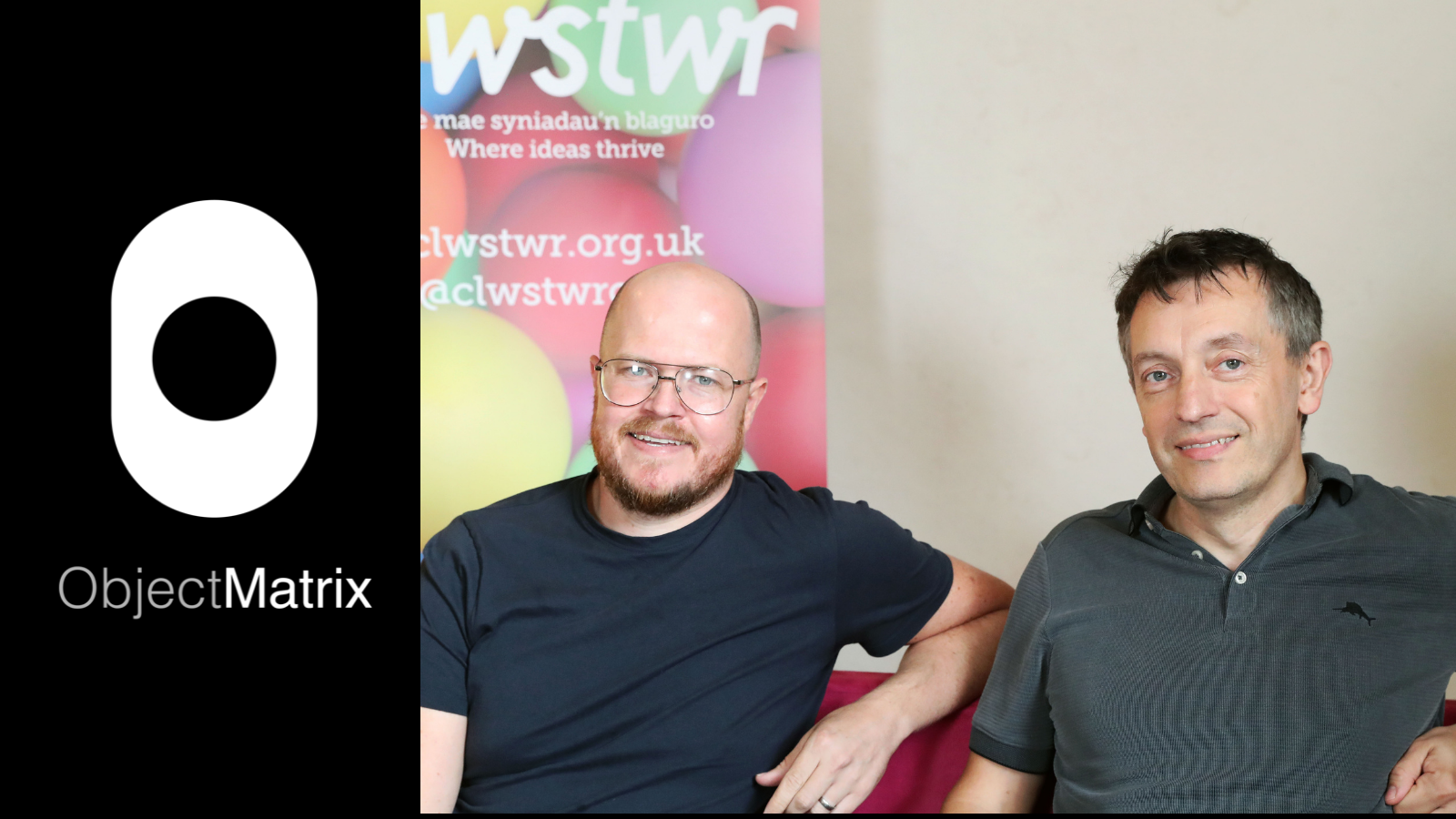About Object Matrix
Object Matrix is a software house based in Cardiff that’s existed for nearly 20 years. It creates solutions for the media industry, enabling customers to store and better use their video footage. It does this through its media library and archive systems that it provides on-premises and as a service through the cloud.
AI is one of the biggest areas in video at the moment
In our sector, one way AI is used is for video analysis. AI can analyse who is in a video, what's happening in a video, what sounds are in a video and so on. The algorithms behind the AI are very clever. You can search terms like ‘car chase’ or ‘man running’ and get a list of scenes that have that action happening. Or, you might go even deeper if the capabilities are there, say by searching ‘Harrison Ford running’, or ‘Harrison Ford running and Bon Jovi playing in the background’.
We realised that video creators needed better ways of searching video archives
While searches are possible, they aren’t always presented in easy to use ways. We wanted to bring better search capabilities to video archives, particularly the types of archives our company sells. So, we applied to Clwstwr for funding to research and develop this idea into a product. We wanted it to house the specific algorithms required to extract certain types of information and metadata from video, so that users can quickly run a search through large video archives to find particular pieces of footage in the timeline.
Our Clwstwr project began with research into what potential users wanted
We have over 200 customers that use our media storage solutions, but we wanted to get a clear idea of what some video creators would need from AI and the search function that we were imagining. We surveyed people from a diverse range of companies that use video to see what they’d want from our search product. The companies varied a lot, from a broadcaster to a sports stadium.
We compiled the findings into a report
All of the potential users we interviewed had different things they wanted to do with AI. It was interesting to see how their uses of the search function might vary. For example, the sports stadium might use the deep data search to gain figures around how much exposure a particular advertiser has had during their games. Or, if one of the companies who paid for advertising wanted a piece of footage that had their advertisement in it for their portfolio, the stadium could use the imagined product to easily find that footage within their huge archive. Broadcasters wanted completely different AI video analysis. The fact that people had different applications for the potential product didn’t matter; we knew there was a market for it.
Following the research, we started the build stage
We had an idea for making the search functionality more efficient. Put simply, it involved finding a way to pre-process the video so that it could be analysed quicker without losing much accuracy. With the prototype, we wanted to prove that it was possible to enter and display information based on archive searches.
We took the data we'd gathered and used it to inform the prototype functionality
We wanted it to be possible to show things in the timeline; nearly everybody needed timeline metadata. We developed the prototype in such a way that users don't just get a positive or negative result when searching for a term. Instead, it shows them exactly where in the video the term they searched for is. It also enables them to enter metadata for those locations. It's relatively straightforward stuff for us to do, but it was a big part of the project that took time.
The prototype product, from the project Focus Image Vision, underwent user testing
It was all very positive, so we were very pleased with the outcome of it. It pushed us on to bring the functionality to our customers. In fact, not only have we proved the concept, we've actually got customers using it. Focus Image Vision functionality now sits within a wider set of solutions we provide. Interestingly, some of our newer customers have specifically said that the functionality provided by Focus Image Vision was key to them coming on board with us.
There's always more you could do or want to do, but progress requires many steps
With the £50,000 funding that we were granted from Clwstwr, we made a good step towards bringing the product to market. Each year, we spend up to £600,000 p.a. on R&D, but having the extra £50,000 was a massive help that made a huge difference. It gave us the space to lift our heads above the parapet in order to be able to do something we wouldn't otherwise be able to.
The pandemic shone a light on the need for cloud-based products like ours
We actually started the research phase of our project before the pandemic. But, once the pandemic hit, we turned our attention to the development side by accelerating the build of the new functionality for our cloud platforms. We focused on the delivery of the prototype so that we could show it in use in cloud environments, which people have become more reliant upon when working remotely.
We're focused on bringing more cloud services to the industry
People are becoming increasingly interested in the cloud, so having a search function that can be used on video in the cloud gives the functionality that people expect to find in that environment. We want to keep developing and improving solutions that we can take worldwide in order to grow the company. There's a big need for cloud solutions in the media industry, so we intend to continue playing in that market and bringing new solutions to it.

